Don't wanna be here? Send us removal request.
Text
The Importance of Regular Blood Pressure Monitoring for Better Health
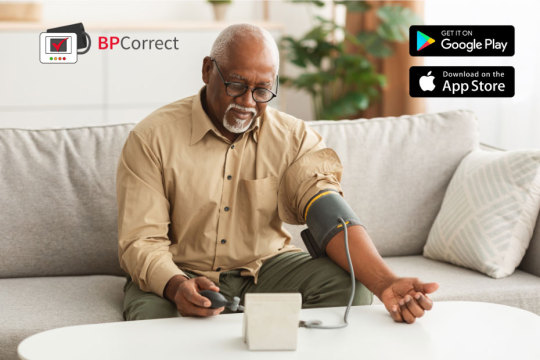
High blood pressure, or hypertension, is a silent killer that affects millions worldwide. Regular blood pressure monitoring is crucial for maintaining good health, preventing complications, and ensuring timely medical intervention. With the advancement of technology, using an app for Blood Pressure Management has made it easier than ever for patients to track their BP levels. This article will explore the significance of blood pressure monitoring, the role of BP apps for patients, and the future of healthcare in managing hypertension.
Why is Blood Pressure Monitoring Important?
Blood pressure monitoring is essential for several reasons:
Early Detection of Hypertension: Regular tracking helps identify high BP levels before they become a severe issue.
Prevention of Heart Diseases: High blood pressure is a leading cause of heart attacks, strokes, and other cardiovascular diseases.
Better Medication Management: Monitoring BP helps doctors adjust medication doses effectively.
Improved Lifestyle Choices: Knowing your BP readings encourages healthier habits like diet control and exercise.
Reduced Risk of Kidney and Vision Problems: High BP can damage the kidneys and eyes if left unchecked.
Read More: Best Apps for Controlling High Blood Pressure
How Often Should You Monitor Your Blood Pressure?
Individuals with normal BP: At least once a year.
Pre-hypertensive individuals: Every few months.
Hypertensive patients: Daily or as per doctor’s advice.
Patients on BP medications: Regular monitoring to ensure the effectiveness of treatment.
Traditional vs. Digital Blood Pressure Monitoring
Traditional Methods
Manual Blood Pressure Cuffs: Requires skill to operate accurately.
Clinic Visits: Often inconvenient for regular monitoring.
Paper Records: Prone to loss or damage.
Digital and Smart BP Monitoring
BP Apps for Patients: Track readings automatically.
Wireless Blood Pressure Monitors: Sync with mobile devices for instant data logging.
Cloud-Based Storage: Ensures data is accessible anytime, anywhere.
Benefits of Using a BP App for Patients
Using an app for Blood Pressure Monitor app can significantly enhance health tracking. Some key benefits include:
Ease of Use: No need for manual recording; the app stores data automatically.
Real-Time Alerts: Sends notifications if BP readings are too high or low.
Data Analytics: Provides trends and insights for better BP management.
Doctor Connectivity: Allows seamless sharing of BP history with healthcare providers.
Lifestyle Tips: Many apps offer diet and exercise suggestions for better BP control.
Features to Look for in a BP App
When choosing a BP app for patients, consider the following features:
Accurate Readings: Ensure the app is compatible with a reliable BP monitor.
User-Friendly Interface: Easy navigation for all age groups.
Cloud Synchronization: Back up your data securely.
Integration with Wearables: Sync with smartwatches or fitness trackers.
Multi-User Support: Ideal for family use.
Custom Reminders: Set alerts for medication and BP checkups.
The Future of Healthcare and Blood Pressure Monitoring
With advancements in digital health, the future of healthcare in BP monitoring looks promising. Here’s what to expect:
Artificial Intelligence (AI) in BP Monitoring
AI-driven analysis can predict hypertension risks based on historical data.
AI-powered BP apps provide personalized recommendations for better health management.
Wearable Technology Integration
Smartwatches with BP sensors will make tracking more seamless.
Continuous BP monitoring without the need for manual measurements.
Telemedicine and Remote Monitoring
Patients can consult doctors remotely using their BP data.
Improved management of chronic hypertension through real-time updates.
Blockchain for Data Security
Secure storage of BP data.
Easy sharing with healthcare providers while maintaining privacy.
Genetic and Personalized Medicine
Personalized treatment plans based on genetic predisposition to hypertension.
AI-driven solutions for medication adjustments.
Read More: Streamline Patient Care with BPCorrect: A Doctor’s Perspective
Tips for Effective Blood Pressure Monitoring
Use a Reliable Device: Ensure your BP monitor is accurate and clinically validated.
Measure at the Same Time Daily: Consistency helps in accurate trend analysis.
Sit in a Comfortable Position: Keep your arm at heart level.
Avoid Caffeine or Smoking Before Measurement: These can temporarily raise BP.
Record Every Reading: Use an app for easy tracking and insights.
Conclusion
Regular blood pressure monitoring is a vital part of maintaining overall health. With the rise of digital solutions, using a BP app for patients has made it easier to track and manage hypertension effectively. As we move into the future of healthcare, technology will continue to play a significant role in improving patient outcomes. By embracing modern BP monitoring methods, individuals can take proactive steps toward a healthier life.
0 notes
Text
How to Choose the Best BP Monitoring App: Essential Features
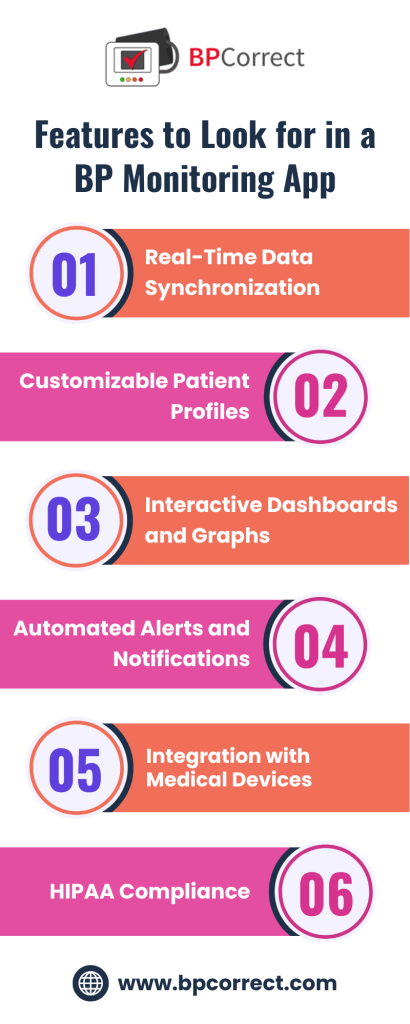
Selecting the best BP monitoring app requires understanding key features that enhance blood pressure tracking. The ideal app should provide automatic logging, detailed reports, and real-time analytics. Customizable reminders ensure regular monitoring, while integration with wearable devices and cloud storage enhances convenience. A user-friendly interface, multiple profile support, and secure data encryption add value. Some apps even offer AI-driven health tips based on your readings. With these features, managing blood pressure becomes more efficient and effective. Choosing the right app can help you stay on top of your health, detect early warning signs, and make informed lifestyle choices.
0 notes
Text
BP Monitoring Apps: What Features Make the Best Choice?

With so many BP monitoring apps available, it’s crucial to choose one that offers the right features. The best apps provide accurate tracking, detailed analytics, and easy-to-read reports. Reminders help users stay consistent, while cloud syncing ensures data is never lost. Integration with smartwatches and BP devices enhances usability, and multiple-user support allows families to track their health together. Some apps even offer AI-based insights and lifestyle recommendations to improve heart health. Choosing an app with these features ensures better management of hypertension and long-term cardiovascular wellness. Make an informed choice and take control of your health today!
0 notes
Text
AI, Telemedicine & Beyond: The Future of Patient Healthcare

Artificial intelligence (AI) and telemedicine are reshaping the healthcare technology for patients, making medical services more efficient and accessible. AI-driven diagnostics enhance accuracy, while virtual consultations allow patients to receive care without visiting a hospital. The rise of wearable devices and IoT (Internet of Things) in healthcare enables continuous monitoring, allowing early detection of health issues. With advancements in biotechnology and personalized medicine, treatment plans are becoming more precise and tailored to individual needs. This article discusses how AI, telemedicine, and other technologies are shaping the future of patient healthcare.
0 notes
Text
BP Correct – Your Natural BP Support Supplement!

Maintaining healthy blood pressure app has never been easier! BP Correct is a natural supplement that provides gentle yet effective BP regulation. Infused with herbal extracts, it enhances circulation, promotes a healthy heart, and helps reduce stress. This formula is perfect for those who prefer a natural approach to BP management. With no artificial additives or harsh chemicals, BP Correct is a safe and reliable choice for long-term cardiovascular support. Stay healthy and keep your BP in check with BP Correct!
0 notes
Text
The Importance of Home Blood Pressure Monitoring for Adults
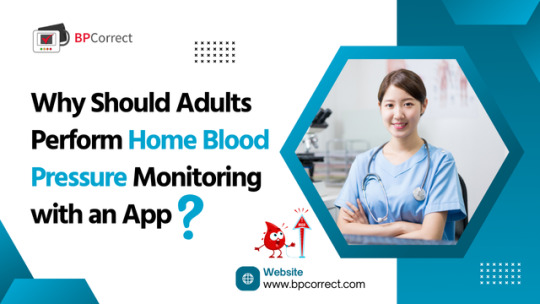
Home blood pressure monitoring is essential for adults, especially those at risk of hypertension. With BPCorrect, tracking your readings is easy, accurate, and accessible. This powerful app helps you stay informed about your cardiovascular health, ensuring timely detection of abnormal fluctuations. Unlike traditional methods, BPCorrect provides trend analysis, reminders, and expert health tips tailored to your needs. Whether you have high blood pressure or just want to stay proactive, this app makes monitoring stress-free. Take control of your health today—start using BPCorrect for smart and efficient blood pressure tracking.
0 notes
Text
Why Every Adult Should Regularly Monitor Their Blood Pressure at Home

Many adults underestimate the importance of tracking their blood pressure regularly. Hypertension is a major risk factor for heart disease, stroke, and kidney issues, often developing unnoticed. Home BP monitoring provides real-time insights, helping adults detect early warning signs and take preventive action. It also helps measure the effectiveness of prescribed treatments, allowing for necessary adjustments. Additionally, keeping a log of blood pressure readings can enhance doctor consultations and treatment plans. Stress-free home monitoring eliminates inaccurate clinic readings and offers better control over one’s health. This article delves into why every adult should make blood pressure monitoring a routine part of their healthcare regimen to maintain overall wellness and longevity.
0 notes
Text
Top 5 Blood Pressure Monitoring App for Healthcare Practitioners

Blood pressure monitoring is crucial in managing various cardiovascular conditions, particularly hypertension, which is often referred to as the "silent killer." Healthcare practitioners require efficient, accurate, and easy-to-use tools for monitoring their patients' blood pressure. Fortunately, modern technology has provided an array of blood pressure monitoring apps that not only offer real-time tracking but also enable easy data sharing with healthcare providers. Below are five of the top blood pressure monitoring apps for healthcare practitioners that can significantly enhance patient care and management.
1. Withings Health Mate
Withings Health Mate is a popular and highly regarded health app that works in conjunction with Withings’ smart devices like the BPM Connect, a wireless blood pressure monitor. This app allows healthcare practitioners to easily track their patients' blood pressure over time and share the data seamlessly with the patient.

Key Features:
Automatic Syncing: The app automatically syncs with Withings’ blood pressure devices, ensuring that readings are updated in real time without requiring manual input.
Comprehensive Health Tracking: Besides blood pressure, Withings Health Mate tracks other metrics such as weight, heart rate, and sleep patterns, offering a holistic view of a patient's health.
Data Sharing: Healthcare providers can directly access patient data shared via the app, making it easier to analyze trends and adjust treatment plans.
Cloud Backup: The app offers secure cloud storage for patient data, allowing healthcare providers to maintain an accurate and up-to-date history of their patient's blood pressure readings.
User-Friendly Interface: The app is designed to be intuitive and easy to use for both healthcare providers and patients, ensuring compliance and making it easier to integrate into the daily management of patients.
Withings Health Mate’s integration with wearable devices and its holistic approach to health tracking make it an excellent choice for healthcare practitioners who want a comprehensive tool to manage patients' blood pressure and overall health.
Read More: How to Measure Blood Pressure at Home Accurately?
2. iHealth No-Touch Blood Pressure Monitor App
The iHealth No-Touch Blood Pressure Monitor App is another excellent choice for healthcare professionals who require a reliable and accurate way to track patient blood pressure. Paired with the iHealth No-Touch Blood Pressure Monitor, the app provides seamless and precise monitoring without physical contact, which is especially beneficial in clinical settings to maintain hygiene and safety standards.
Key Features:
Automatic Data Syncing: Once a blood pressure measurement is taken, the data is automatically synced to the app, eliminating the need for manual input and reducing errors.
Real-Time Blood Pressure Monitoring: The app provides real-time data, making it easier for healthcare practitioners to quickly assess a patient’s blood pressure and make timely decisions.
Patient Records: iHealth stores all readings in a secure, easy-to-access history log. Healthcare providers can view trends over time, which helps in diagnosing and adjusting treatment plans for patients.
Measurement Instructions: The app includes helpful instructions for both patients and practitioners, ensuring that measurements are taken correctly and consistently each time.
Multilingual Support: iHealth supports multiple languages, making it ideal for healthcare practitioners working with diverse patient populations.
Cloud Integration: The app allows easy data sharing with other healthcare professionals, facilitating collaboration on treatment plans and improving the overall care experience.

With its focus on accuracy, ease of use, and real-time data syncing, the iHealth app is a valuable tool for healthcare providers to monitor their patients’ blood pressure efficiently.
3. Omron Connect
Omron is a trusted name in blood pressure monitoring devices, and the Omron Connect app complements their range of blood pressure monitors. The app is designed for both patients and healthcare practitioners, offering detailed insights into blood pressure trends and measurements over time.
Key Features:
Comprehensive Data Analysis: The Omron Connect app provides healthcare practitioners with detailed reports on patients' blood pressure trends, allowing them to make informed decisions about treatment.
Multiple Device Compatibility: Omron Connect works with a variety of Omron blood pressure devices, including automatic monitors and wearable devices, offering flexibility in monitoring options.
Data Sharing: Patients can easily share their blood pressure data with healthcare providers via email or through a secure link, making it easier for practitioners to stay updated on their patients' progress.
Trends and Insights: The app generates charts that track blood pressure readings over days, weeks, and months, allowing practitioners to identify patterns and make data-driven adjustments to care plans.
Integration with Other Health Apps: Omron Connect can integrate with other fitness and health apps, providing a comprehensive health overview that includes additional metrics like heart rate and activity levels.
Cloud Storage: All data is securely stored in the cloud, ensuring that patient records are safely backed up and can be accessed from anywhere.
Read More: The Future of Patient Care: Technology-Enabled Practitioner Support
Omron Connect’s seamless integration with Omron devices and its rich data analysis tools make it a powerful app for healthcare professionals managing blood pressure in a clinical setting.
4. Qardio Heart Health
Qardio Heart Health is an all-in-one health tracking app designed to work with Qardio’s range of health devices, including their blood pressure monitors, which are clinically validated for accuracy. This app offers a holistic approach to cardiovascular health by integrating blood pressure, weight, and other metrics to provide healthcare practitioners with a comprehensive view of a patient’s heart health.
Key Features:
Clinically Validated: Qardio’s blood pressure monitor and app are clinically validated, ensuring that healthcare practitioners receive accurate, reliable data to make informed decisions.
Easy Data Sharing: Patients can easily share their blood pressure data with their healthcare providers in real time, helping practitioners stay updated on their patient’s condition without requiring office visits.
Health Insights: The app offers detailed charts and graphs to help healthcare professionals track changes in blood pressure and other metrics over time. These insights can inform treatment decisions and preventive measures.
Multiple Patient Profiles: Healthcare providers can track multiple patients in the same app, making it a great tool for managing patient data across various conditions and treatment plans.
Smart Notifications: The app sends automatic notifications when blood pressure readings are outside of a healthy range, enabling timely intervention.
Secure and HIPAA Compliant: The app complies with privacy regulations like HIPAA, ensuring that patient data is securely stored and shared.

Qardio Heart Health stands out as a comprehensive tool for healthcare practitioners, offering detailed cardiovascular health insights and seamless integration with Qardio devices.
5. Blood Pressure Companion
Blood Pressure Companion is an excellent app for both patients and healthcare professionals who need an easy and effective way to monitor blood pressure readings. It offers a simple yet powerful interface for tracking and analyzing blood pressure data over time.
Key Features:
Customizable Logging: Users can easily log and track blood pressure readings along with relevant notes such as lifestyle factors, medications, and physical activity.
Data Sharing: Healthcare providers can access patient data through the app, allowing for better collaboration and a more personalized treatment approach.
Graphical Data Representation: The app generates graphs to visually display trends in blood pressure readings, which makes it easier for healthcare practitioners to identify patterns and adjust care accordingly.
Alerts and Reminders: Blood Pressure Companion allows healthcare practitioners to set reminders for patients to take their blood pressure measurements, ensuring consistency and accuracy.
Comprehensive Reporting: The app can generate detailed reports for both patients and healthcare providers, allowing for a deeper analysis of blood pressure readings over time.
Blood Pressure Companion is a reliable, straightforward app for healthcare practitioners who want to streamline the blood pressure monitoring process and maintain effective patient management.
Conclusion
The right blood pressure data-sharing app can enhance healthcare practitioners’ ability to manage patient care by providing real-time insights, seamless data sharing, and detailed trend analysis. Apps like Withings Health Mate, iHealth No-Touch, Omron Connect, Qardio Heart Health, and Blood Pressure Companion provide healthcare professionals with the tools they need to track patient blood pressure efficiently, collaborate with patients, and adjust treatment plans based on accurate, up-to-date data. By choosing the right app, healthcare providers can improve patient outcomes and make the monitoring process easier for both parties.
0 notes
Text
BPCorrect: Your Trusted BP Monitoring Companion

When it comes to managing blood pressure, consistency and accuracy are key. BPCorrect is your trusted BP monitoring companion, providing precise readings and easy-to-use tracking features. Designed for both individuals with hypertension and those who want to maintain optimal heart health, BPCorrect ensures that monitoring your BP is convenient and stress-free. The app records your measurements automatically, detects fluctuations, and offers health insights based on your trends. Unlike traditional BP tracking methods, BPCorrect integrates seamlessly with your lifestyle, making it easier to stay on top of your cardiovascular health.
0 notes
Text
Home Blood Pressure Monitoring: A Complete Accuracy Guide
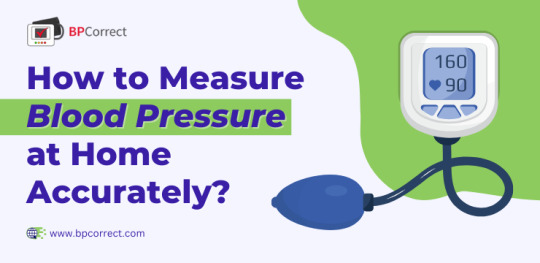
Want to ensure your home blood pressure measure are as accurate as possible? This complete accuracy guide walks you through every step, from selecting the right BP monitor to proper measuring techniques. Learn when and how to take your readings, why multiple measurements matter, and how to interpret your results. This comprehensive guide will help you take control of your heart health with confidence. Say goodbye to inaccurate readings and start monitoring your BP like a pro!
0 notes
Text
What to Look for in a Blood Pressure Tracking App?

A good BP tracking app should provide accurate measurements, easy logging, and insightful reports. BPCorrect offers these essential features, along with cloud backup, smart device compatibility, and instant alerts for abnormal readings. It helps users maintain a healthy lifestyle by offering personalized recommendations and trends. Read more to understand why these features matter and how BPCorrect can help you stay in control of your blood pressure.
0 notes
Text
The Benefits of a BP Monitoring App for Remote Patient Management

Hypertension, or high blood pressure, is a global health concern, affecting millions of individuals worldwide. Left untreated, it can lead to serious health complications, including stroke, heart disease, and kidney failure. Managing hypertension effectively requires continuous monitoring and regular adjustments to treatment plans. Traditionally, blood pressure (BP) was monitored during periodic doctor visits. However, with advancements in technology, BP monitoring apps are now revolutionizing the way patients with hypertension are managed, particularly in remote settings. These apps have become an invaluable tool for healthcare providers, allowing for effective and efficient remote patient management. In this article, we explore the many benefits that BP monitoring apps offer for remote patient management and how they are improving healthcare outcomes.
1. Continuous and Real-Time Monitoring
One of the most significant advantages of BP monitoring apps is their ability to offer continuous and real-time monitoring of a patient’s blood pressure. Traditional BP management relies on patients visiting healthcare providers periodically, which means doctors can only assess blood pressure at a specific moment in time. However, BP can fluctuate throughout the day due to various factors, such as stress, physical activity, and medication adherence. BP monitoring apps enable patients to measure their blood pressure multiple times a day, ensuring that healthcare providers have access to a more complete and accurate picture of the patient’s health.
These apps are often integrated with Bluetooth-enabled blood pressure cuffs, making it easier for patients to take their measurements and have them automatically uploaded to the app. With real-time data accessible at any time, healthcare providers can quickly spot irregularities, trends, or potential risks. This continuous monitoring allows doctors to take swift action when needed, without waiting for a scheduled appointment, improving the chances of timely intervention and reducing the risk of severe complications.

2. Improved Patient Adherence and Engagement
Patient adherence to prescribed treatment regimens is a key challenge in the management of chronic conditions like hypertension. BP monitoring apps can significantly improve adherence by providing patients with reminders to take their blood pressure readings or medications. These apps often come with built-in notification systems that remind users to measure their BP at designated times, ensuring regular and consistent monitoring. Additionally, the apps may offer educational content on managing hypertension, helping patients understand the importance of following their treatment plan.
BP monitoring apps also engage patients more actively in their own care. By allowing patients to track their blood pressure and see how their readings change over time, these apps empower patients to take a more active role in managing their health. Many apps provide visual feedback, such as charts and graphs, that make it easier for patients to see trends in their blood pressure. This visibility can motivate patients to make positive lifestyle changes, such as adhering to medication regimens, improving their diet, and increasing physical activity. As a result, BP monitoring apps help patients feel more in control of their health, leading to improved adherence and better health outcomes.
Read More: Effortlessly Share Your Blood Pressure Data with the BPCorrect App
3. Personalized Treatment Plans and Adjustments
Hypertension treatment is not a one-size-fits-all approach. Each patient’s condition, lifestyle, and medical history are unique, requiring a personalized approach to care. BP monitoring apps provide doctors with detailed, real-time data that helps them customize treatment plans for individual patients. By observing how a patient’s blood pressure responds to specific interventions, doctors can adjust medication dosages, recommend lifestyle changes, and suggest other strategies to improve blood pressure control.
For example, a patient who consistently records high BP readings despite taking medication may need a different dosage or a change in the type of medication. The ability to adjust treatment plans based on continuous monitoring helps doctors respond quickly to a patient’s needs, ensuring optimal management of their hypertension. Moreover, these adjustments can be made without the need for in-person consultations, reducing the burden on both patients and healthcare systems.

4. Enhanced Communication Between Patients and Healthcare Providers
One of the key benefits of BP monitoring apps is the enhanced communication they facilitate between patients and healthcare providers. Traditionally, communication between doctor and patient was limited to scheduled visits or emergency situations. BP monitoring apps bridge this gap by enabling ongoing communication through direct messaging features, updates, and alerts.
Through these apps, patients can share their blood pressure readings, symptoms, or concerns with their healthcare providers at any time. If a patient experiences an issue, such as a sudden spike in blood pressure or side effects from medication, they can immediately notify their doctor. In turn, healthcare providers can quickly assess the situation and provide guidance, adjustments to the treatment plan, or reassurance if necessary. This constant communication fosters a stronger patient-provider relationship and ensures that patients receive timely care, even in remote settings.
This type of real-time communication is especially valuable for patients who live in rural or underserved areas where access to healthcare may be limited. Remote management through BP monitoring apps eliminates the need for frequent in-person visits, making healthcare more accessible and convenient for these patients. It also reduces the need for travel, which can be particularly burdensome for elderly patients or those with mobility issues.
5. Early Detection of Complications and Risk Factors
Hypertension is often asymptomatic, meaning it can cause significant damage to organs and systems in the body without the patient being aware of it. Left untreated, high blood pressure can lead to severe complications, such as heart attacks, strokes, and kidney damage. BP monitoring apps provide doctors with early insights into potential complications by detecting abnormal patterns in blood pressure readings.
Read More: Why Practitioners Trust BPCorrect for Blood Pressure Management
By continuously tracking BP, these apps can help identify patients who may be at risk for more serious health issues. For instance, if a patient’s BP shows signs of sudden spikes or sustained high readings, healthcare providers can take immediate action to address the problem before it leads to a more severe condition. Early intervention is crucial in preventing life-threatening complications, and BP monitoring apps make this possible by providing doctors with the data they need to make informed decisions.
6. Cost-Effectiveness and Resource Optimization
Remote patient management using BP monitoring apps is also a cost-effective approach to healthcare. By reducing the need for frequent in-person doctor visits, patients can avoid unnecessary travel expenses and time off work. Healthcare systems can also optimize their resources by focusing in-person visits on patients who truly need them, while remotely managing those who can be monitored effectively through the app.
For healthcare providers, the ability to track a large number of patients remotely ensures that they can manage a high caseload more efficiently. Doctors can focus on the patients who need urgent attention, while those with stable conditions can be monitored regularly through the app. This optimization of resources reduces healthcare costs and makes the overall healthcare system more efficient.

7. Increased Health Equity
Remote patient management through BP monitoring apps also has the potential to increase health equity, particularly in underserved communities. Many individuals in rural or low-income areas face barriers to accessing healthcare, such as a lack of transportation or limited access to healthcare facilities. BP monitoring apps allow these individuals to receive high-quality care without the need for frequent travel or expensive in-person consultations.
By making hypertension management more accessible and convenient, these apps help bridge the gap between underserved populations and essential healthcare services. This can lead to improved health outcomes for individuals who may otherwise have limited access to healthcare resources.
Conclusion
BP monitoring apps are transforming the way hypertension is managed, particularly in remote patient management. By providing continuous monitoring, enhancing communication, and enabling personalized care, these apps offer significant benefits to both patients and healthcare providers. With the ability to detect complications early, improve patient adherence, and optimize healthcare resources, Blood Pressure Management are improving the quality of care for individuals with hypertension, ultimately leading to better health outcomes. As technology continues to evolve, these apps will likely play an even more central role in managing chronic conditions, making healthcare more accessible, efficient, and patient-centered.
0 notes
Text
Most Innovative Tech Solutions for Practitioner Support

Innovation is driving the future of practitioner support, with AI, automation, and solutions like BPCorrect leading the way. These tools enhance efficiency, accuracy, and patient engagement. Explore the most groundbreaking advancements of 2025.
0 notes
Text
Better BP Management Starts Here – Get BPCorrect!

Managing blood pressure is crucial for maintaining a healthy heart, and BPCorrect makes it easier than ever. This intuitive app lets you log readings, analyze trends, and set reminders for regular monitoring. With features like cloud backup, real-time health insights, and expert recommendations, BPCorrect helps you take charge of your app for BP monitor. Whether you're at home, work, or on the go, track your BP with confidence. Get BPCorrect today and start your journey to better health!
0 notes
Text
How Blood Pressure Apps Connected to Machines are Improving Accuracy and Efficiency?

Technology is transforming healthcare, and blood pressure monitoring is no exception. With the integration of smart devices and real-time data sharing, the best BP monitoring app offers clinicians and patients more accurate and efficient ways to manage hypertension. In this article, we explore how blood pressure data-sharing apps are enhancing precision and streamlining care for doctors and patients alike.
The Importance of Accurate Blood Pressure Monitoring
Blood pressure is a critical health metric that needs to be monitored consistently to detect hypertension and other cardiovascular issues. Traditional manual methods may lead to errors due to human oversight or improper techniques. Digital solutions, such as the best BP monitoring app for doctors, provide an automated and reliable approach, ensuring consistent readings and improved patient care.
How BP Apps Connected to Machines Enhance Accuracy
1. Automated Readings Reduce Human Error
Smart BP monitors eliminate the inconsistencies found in manual measurements.
Automated readings ensure that measurements are taken at the correct intervals.
Clinicians can trust the data collected, leading to better diagnosis and treatment plans.
2. Real-Time Data Sharing for Continuous Monitoring
Blood pressure data-sharing apps allow real-time access to patient records.
Patients can sync their BP readings directly with their doctor’s system.
This facilitates timely interventions, reducing the risks of complications.
3. Integration with Wearable Devices for 24/7 Monitoring
Smartwatches and fitness trackers can now measure and transmit BP data.
Continuous tracking helps in detecting irregularities earlier.
Doctors receive alerts for concerning fluctuations, enabling proactive care.
Read Also: Why Practitioners Trust BPCorrect for Blood Pressure Management
How BP Monitoring Apps Improve Efficiency for Clinicians
1. Seamless Data Management
Digital BP logs replace traditional paper records.
Doctors can access past readings in seconds, improving patient consultations.
Easy retrieval of data supports better long-term patient management.
2. AI-Powered Insights and Analytics
Advanced apps analyze BP patterns and highlight potential health risks.
AI-driven alerts notify doctors about significant deviations from normal readings.
Custom treatment plans can be generated based on predictive analytics.
3. Remote Patient Monitoring Saves Time
Patients can take readings from home and share data instantly.
Doctors can track multiple patients simultaneously without in-person visits.
Telemedicine consultations become more effective with real-time BP data.
Key Features of the Best BP Monitoring App
To ensure optimal accuracy and efficiency, a blood pressure data-sharing app should include:
Bluetooth or Wi-Fi Connectivity: Ensures seamless syncing with BP monitors.
Cloud Storage & Access Control: Securely store patient records for easy retrieval.
Integration with EHR Systems: Directly updates electronic health records for doctors.
Customizable Alerts: Notifies clinicians about abnormal BP readings.
HIPAA Compliance: Ensures data privacy and security.
Read Also: Blood Pressure Apps vs. Regular Monitoring: Which is Better?
Benefits of BP Monitoring Apps for Patients
Convenience: Patients can monitor BP anytime, anywhere.
Better Adherence to Treatment: Apps provide medication and lifestyle reminders.
Enhanced Communication: Doctors can provide instant feedback on readings.
Reduced Clinic Visits: Fewer unnecessary hospital visits save time and resources.
Challenges and Solutions in Implementing BP Apps
Despite their advantages, some challenges need to be addressed:
Device Accuracy: Ensuring medical-grade BP monitors are used.
User Compliance: Educating patients on proper BP measuring techniques.
Data Security Risks: Implementing strong encryption and security protocols.
Integration Issues: Ensuring compatibility with different healthcare IT systems.
The Future of Blood Pressure Monitoring Apps
With ongoing advancements, the future of the best BP monitoring app for doctors includes:
AI-Based Diagnosis: Predicting hypertension risks with greater accuracy.
5G-Enabled Remote Monitoring: Faster data transmission for real-time decisions.
Smartphone-Based Calibration: Apps adjusting for more precise BP readings.
IoT and Cloud Integration: Improved interconnectivity for better patient care.
Conclusion
The integration of blood pressure data-sharing apps with monitoring machines is transforming hypertension management. By improving accuracy, automating data collection, and enabling real-time patient monitoring, these apps enhance efficiency for doctors while ensuring better outcomes for patients. As technology advances, the best BP monitoring app will continue to revolutionize digital healthcare, making it easier for clinicians to provide high-quality, data-driven patient care.
0 notes
Text
Blood Pressure Apps vs. Medical Devices: What’s More Reliable?
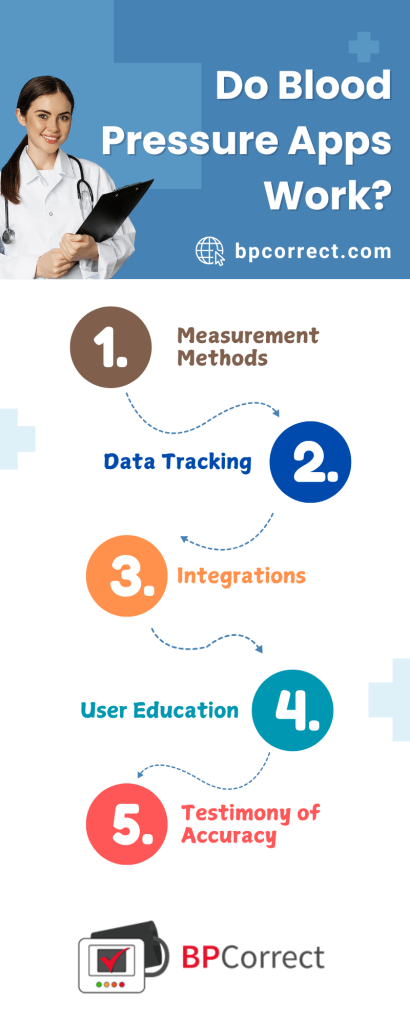
Should you trust a medical device over a smartphone app for blood pressure monitoring? This article compares both in terms of reliability, validation, and practical use. We examine the latest advancements in app technology and offer expert insights into when each method is most appropriate.
0 notes
Text
Choosing Between Blood Pressure Apps and Regular Monitoring: A Comprehensive Comparison
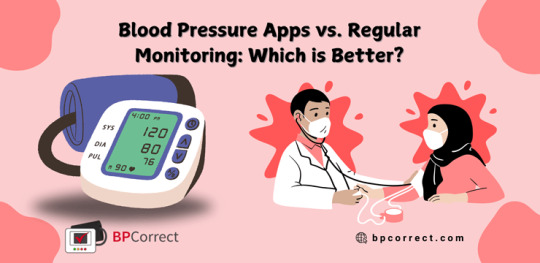
Selecting the best method for blood pressure tracking involves comparing the reliability of BP monitoring apps for patients with traditional manual readings. Best BP monitoring apps often feature advanced tracking features, including reminders, report generation, and the ability to share data with doctors. A BP monitoring app for patients offers convenience and instant feedback, while manual monitoring involves taking regular readings and recording them manually. Practitioners benefit from blood pressure monitoring software for practitioners to seamlessly track patient data and make informed decisions. The key decision-making factor lies in convenience, accessibility, and the patient’s health management needs.
0 notes